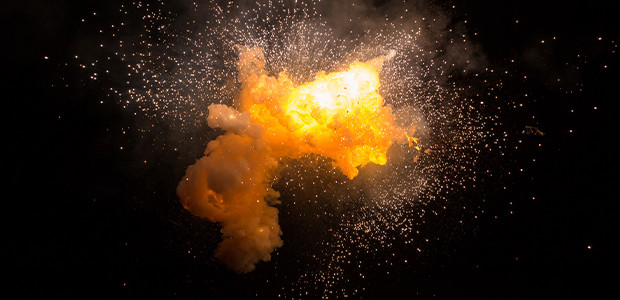
Managing Combustible Dust and Risk Mitigation
Failing to conduct a dust hazard analysis is a common oversight and can lead to installations with unmitigated risks.
- By Scott Czarnecki
- Sep 01, 2021
To determine the most effective combustible dust hazard mitigation approach for new and existing dust collection system installations, a dust hazard analysis (DHA) conducted by a qualified person should be performed.
NFPA 652: Standard on the Fundamentals of Combustible Dust defines a qualified person as, "A person who, by possession of a recognized degree, certificate, professional standing, or skill, and who, by knowledge, training, and experience, has demonstrated the ability to deal with problems related to the subject matter, the work, or the project." For a DHA to be effective, it must analyze all the potential fire, deflagration and explosion scenarios associated with the process and connected ventilation system. The hazards associated with combustible dusts are complex.
Managing Risk
All too often, combustible dust collection systems are purchased and installed without the completion of a thorough DHA. Failing to conduct a dust hazard analysis is a common oversight and can lead to installations with unmitigated risks.
Do not allow vendors or contractors to increase your risk and liability. Equipment manufacturers might design systems for a range of applications, but they cannot know the conditions specific to your facility, creating risk to life and property.
Often a dust collector’s operation and installation manual will contain a full page of text explaining why they are not responsible for the system's design, operation or installation:
*“Vendor does not provide engineering consulting services related to process or dust hazard analyses, or code or standard compliance.”
*“The process owner’s final selection of dust collectors and risk mitigation strategies should be based on the outcome of a dust hazard analysis…”
Implementing a quality DHA is critical. How a dust collection system is designed, installed and operates—your risk mitigation—should be based on the results of a dust hazards analysis.
Testing for Dust Explosibility Characteristics
Determining if your dust is explosible is the first step to select an appropriate dust collection system.
Explosibility characteristic data is essential for the design of an effective system. Typically, the first two parameters used in characterizing dust and designing a dust collection system are the Kst and Pmax.
The Kst is a measurement of explosion severity. The higher the Kst value, the stronger the force the dust could generate during an explosion. Note that a low Kst does not mean the dust is only slightly combustible or nearly noncombustible. It represents the force of explosion, how fast an explosion may travel.
This article originally appeared in the September 2021 issue of Occupational Health & Safety.